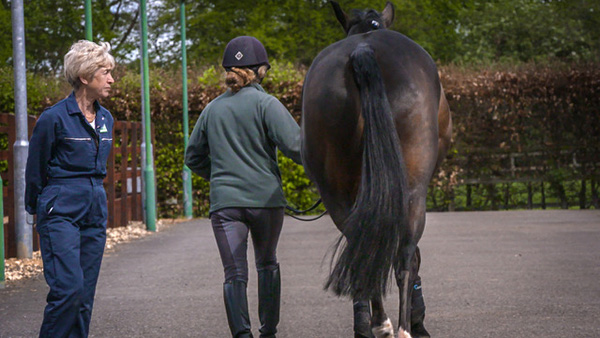International Lameness Specialist Presents Online Educational Course
A new online educational course, produced by Dr Sue Dyson and Equitopia, is giving everyone the opportunity to learn how to listen to their horse and spot the early signs of pain in ridden horses. By aiding prompt detection and quick treatment the course will help improve horse welfare and performance.
The 12 part course, how to recognize the 24 behaviors indicating pain in the ridden horse, is presented by international equine lameness specialist Dr Sue Dyson. It has been produced by the US’s popular evidence-based online educational resource Equitopia and helps translate Dr Dyson’s extensive research involving six studies and 400 horses, into action.
It illustrates why pain is so poorly understood, the signs to look for, how to use an “ethogram” to score pain, and what to do once you find pain. An ethogram is a catalogue of behaviours with very clear definitions. Most of the previous pain-related behavioral work related to horses has only looked at the facial expressions of non-ridden horses, whereas Dr Dyson’s ethogram looks at the whole horse.
Passionate about improving the understanding and management of lameness and poor performance, Dr Dyson wanted the course to be accessible to anyone with an interest in horses, from vets, vet students and farriers, to conscientious horse owners, physiotherapists and chiropractors, with the ultimate aim of improving equine welfare.
“I was becoming increasingly concerned by the number of riders who were ignoring their horses’ problems for far too long,” explains Dr Dyson. “They would say things like ‘he’s always been a grumpy horse,’ ‘he’s never been a willing horse,’ or ‘he’s never wanted to stand to be mounted.’ For vets who have had little training in the recognition of low-grade lameness, it can be a struggle to understand their clients’ complaints. These things get missed at pre-purchase examinations too. Early recognition is nearly always advantageous for a better prognosis and the course will really help to achieve this.”
Learners will gradually build their knowledge over the 12 parts so that they can confidently assess horses for pain at the end of the course. It is not just a matter of listening and watching – course participants will need to interact with people and horses from their local yard, study pictures, and take quizzes to help reinforce information and enable it to become second nature knowledge.
“I’m absolutely convinced that we have developed a really powerful tool for early recognition of pain,” said Dr Dyson. “I think it’s hugely important that this information is disseminated as widely as possible amongst the equestrian industry. A pain-free horse is a happier horse and we should all be obliged to train ourselves to listen to what our horses are trying to tell us.”
You can sign up for the entire course at www.EquitopiaCenter.com. Become a member of Equitopia for USD 4.95 per month and you will receive access to monthly webinars, podcasts, summaries of research articles, members-only videos and 10% discount on all online courses, including this one.











